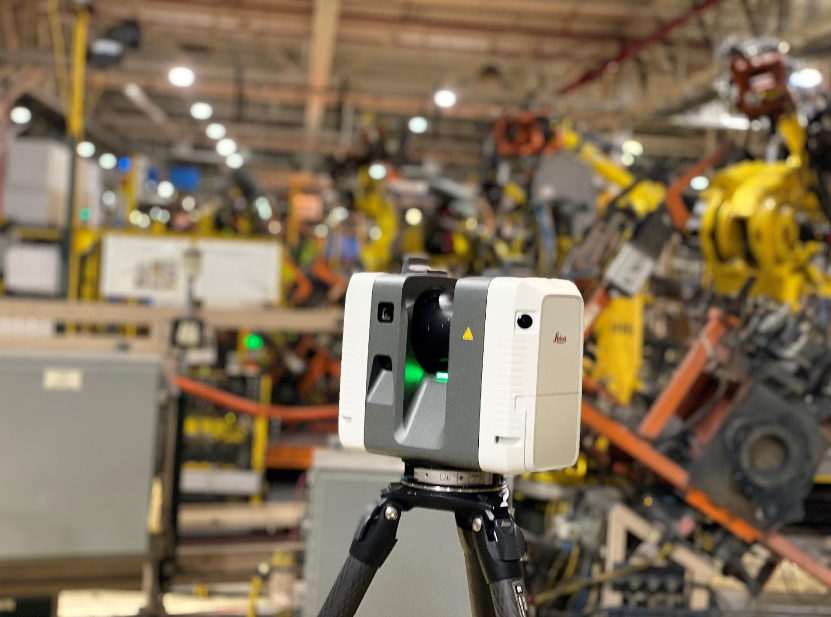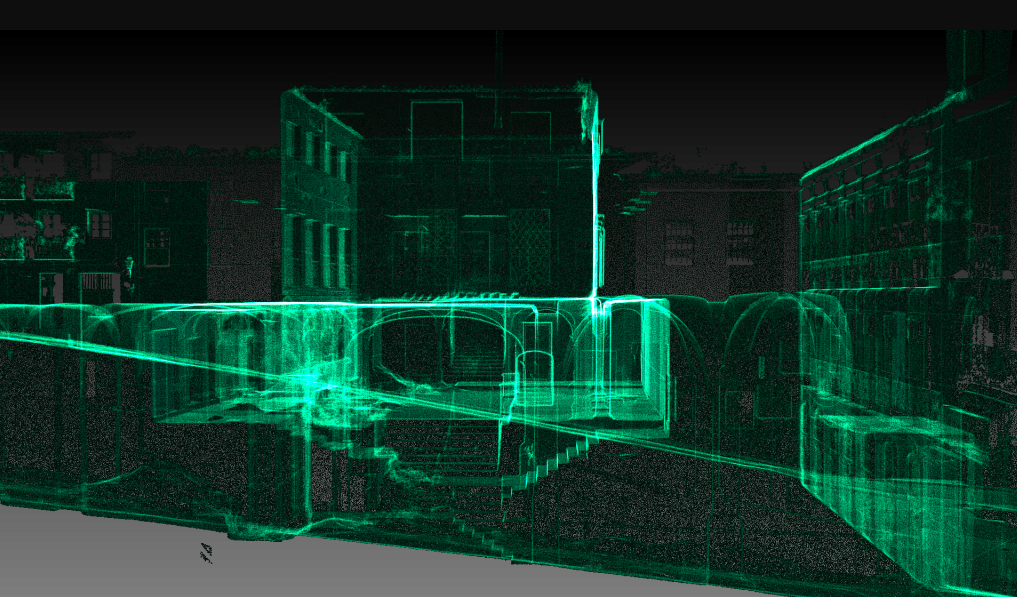The Future of Precision Measurement: Recognizing the Function of 3D Laser Scanning Modern Technology
The landscape of precision measurement is progressing with the arrival of 3D laser scanning innovation. This development guarantees improved accuracy and efficiency across numerous fields. As markets start to accept these advancements, the ramifications for project management and execution become progressively substantial. The transformative results of this modern technology expand past plain numbers and measurements, hinting at a wider shift in how experts approach their work. What might this suggest for the future?
What Is 3D Laser Scanning Technology?
3D laser scanning modern technology is an advanced method made use of to record precise three-dimensional dimensions of physical objects and environments. This technology utilizes laser beam of lights to collect data factors, which are then processed to produce thorough digital representations of the scanned subjects. By releasing countless laser pulses per second, 3D laser scanners can properly videotape the shape, size, and spatial relationships of various surface areas.
The procedure typically entails positioning the scanner at various perspective to capture substantial information. The resulting point cloud, a collection of numerous data points, can be evaluated and exchanged 3D versions. Applications of this technology span multiple fields, including design, engineering, and heritage conservation, where it assists in documentation and evaluation. As a non-intrusive method, 3D laser scanning reduces interruption to the environment, permitting detailed analyses of both existing frameworks and all-natural landscapes, consequently improving understanding and helping with notified decision-making.
Secret Perks of 3D Laser Scanning in Numerous Industries
3D laser scanning innovation supplies substantial advantages across different industries by providing boosted accuracy and precision in measurements. This modern technology not only improves workflows but also results in significant time and price financial savings. As companies significantly adopt this cutting-edge strategy, the advantages end up being evident in enhanced job end results and efficiencies.
Enhanced Accuracy and Precision
The assimilation of laser scanning innovation has actually reinvented the method sectors come close to measurement and information collection. This innovation supplies an unmatched degree of accuracy, catching numerous data factors in a solitary check. Consequently, specialists across various areas, such as manufacturing, design, and architecture, can produce highly outlined 3D models that reflect real-world conditions. Improved precision reduces errors connected with conventional dimension methods, making sure that building and constructions and layouts are based upon accurate information. In addition, the ability to capture intricate information permits far better evaluation and decision-making, inevitably leading to enhanced end results. By leveraging 3D laser scanning, markets can achieve greater standards of top quality, making it a vital device for specific dimensions.
Time and Price Performance
Efficiency in time and expense is a substantial benefit offered by laser scanning modern technology, changing task implementation throughout different sectors. By swiftly capturing in-depth 3D information, laser scanning lowers the time invested in hands-on dimensions and minimizes the danger of errors. This swift information purchase facilitates quicker decision-making and task timelines, enabling teams to designate resources better. In addition, the modern technology lowers the demand for rework, as exact models cause better preparation and implementation. Industries such as building, architecture, and producing benefit significantly, seeing reduced prices connected to labor and products. Overall, 3D laser scanning not just improves operational effectiveness yet likewise contributes to significant savings, making it an invaluable tool in today's affordable landscape.
Applications of 3D Laser Scanning in Style and Building and construction
As architectural and building jobs expand progressively complex, the adoption of laser scanning technology has actually emerged as a transformative service. This innovation uses exact dimensions and comprehensive 3D representations of existing frameworks, assisting in more precise planning and style procedures. Designers use 3D laser scanning to develop electronic models that record detailed information, ensuring that remodellings and brand-new building and constructions align completely with existing conditions.

The Function of 3D Laser Scanning in Production Processes
3D laser scanning plays an essential duty in manufacturing procedures by improving quality assurance through precise measurements Continue and information collection. This technology enables suppliers to identify discrepancies early, decreasing mistakes and waste. Additionally, it simplifies production workflows by promoting better interaction and sychronisation among groups.
Improved Quality Assurance
Quality control in making processes has been revolutionized by the combination of laser scanning modern technology. This cutting-edge method enables accurate dimensions and detailed inspections of elements, guaranteeing that they fulfill strict quality criteria. 3D laser scanning records complex geometries and tolerances, enabling suppliers to find discrepancies from design specifications quickly. This technology greatly decreases human error connected with standard measurement methods, offering dependable and consistent data. By promoting real-time quality control, it makes it possible for proactive adjustments in the manufacturing process, ultimately bring about improved product integrity and consumer fulfillment. As markets increasingly embrace 3D laser scanning, the potential for enhanced quality assurance becomes noticeable, noting a transformative change in producing techniques.
Structured Production Operations
Effective production workflows are significantly linked here taking advantage of the integration of laser scanning modern technology in producing processes. This modern technology enables fast, precise dimensions of assemblies and parts, significantly lowering the moment required for configuration and adjustments. By capturing exact geometry, suppliers can quickly recognize discrepancies in between style specifications and actual products, making it possible for immediate restorative actions. In enhancement, 3D laser scanning promotes the smooth transfer of information between style and production groups, enhancing partnership and minimizing mistakes. The innovation likewise supports digital double development, enabling real-time monitoring and optimization of manufacturing processes. Because of this, organizations can accomplish greater efficiency, minimized waste, and boosted overall efficiency, inevitably driving affordable benefit in the marketplace.
Protecting Heritage: Just How 3D Laser Scanning Aids Cultural Preservation
As social heritage websites encounter the danger of wear and tear and devastation, cutting-edge technologies such as laser scanning become important tools for conservation efforts. 3D laser scanning records intricate details of historical structures and artifacts with impressive precision, developing digital versions that offer multiple objectives in preservation. These designs permit exact paperwork of current conditions, allowing professionals to keep track of changes gradually and assess degeneration dangers.
Furthermore, laser scanning promotes digital restoration, helping conservators establish strategies for repair services or recreating lost aspects without intrusive approaches. The technology also aids in informing the general public, supplying immersive experiences through virtual excursions that highlight the significance of these websites. By incorporating 3D laser scanning right into social conservation practices, stakeholders can assure that heritage is maintained for future generations while improving understanding and admiration of historic contexts.
The Future Outlook: Improvements and Fads in 3D Laser Scanning Modern Technology
3D laser scanning innovation has actually already transformed numerous sectors, its future pledges also better advancements that will boost accuracy, availability, and speed. Arising patterns show an increase in integration with fabricated intelligence and machine click for more discovering, leading to smarter information processing and evaluation abilities. This synergy will certainly enable quicker decision-making and more specific end results in fields such as building, design, and heritage conservation.
Innovations in hardware are expected to yield lighter, more mobile scanning devices, democratizing access for smaller sized firms and individual experts. As software application remains to progress, easy to use applications will certainly simplify complicated process, making 3D scanning much more available to non-experts
The rise of cloud-based solutions will facilitate real-time cooperation and data sharing amongst stakeholders, leading the way for streamlined task monitoring. Jointly, these patterns signal a future where 3D laser scanning modern technology ends up being an important tool in an also broader range of applications.
Often Asked Inquiries
Just How Much Does 3D Laser Scanning Technology Cost?

What Are the Abilities Called For to Run 3D Laser Scanners?
Operating 3D laser scanners calls for technological efficiency, interest to information, spatial understanding, understanding of software application for data handling, and an understanding of surveying principles. Additionally, solid analytical abilities and analytic abilities are vital for reliable procedure.
Can 3D Laser Scanning Integrate With Other Technologies?
Yes, 3D laser scanning can incorporate effortlessly with various other innovations, such as Geographic Details Solution (GIS), Structure Info Modeling (BIM), and boosted fact, boosting data precision and promoting improved evaluation across different markets and applications. - 3D Scanning
What Is the Normal Scanning Range of These Gadgets?
The normal scanning range of 3D laser scanning devices differs widely, normally in between 50 meters to over 1,000 meters, relying on the model and application, affecting their viability for different precision measurement tasks and environments.
How much time Does a 3D Laser Scanning Task Take?
A 3D laser scanning task commonly takes anywhere from a few hours to numerous days, depending on elements such as job dimension, intricacy, and called for information. Each project's timeline can vary significantly based upon these aspects.
The landscape of precision measurement is developing with the introduction of 3D laser scanning technology. 3D laser scanning innovation is an advanced technique made use of to capture specific three-dimensional dimensions of physical items and environments. 3D laser scanning modern technology provides substantial benefits across different markets by giving enhanced precision and precision in dimensions. 3D laser scanning technology has actually currently changed numerous industries, its future assurances even greater innovations that will enhance precision, rate, and ease of access. 3D laser scanning technology generally sets you back in between $10,000 and $100,000, depending on the devices's functions and abilities.